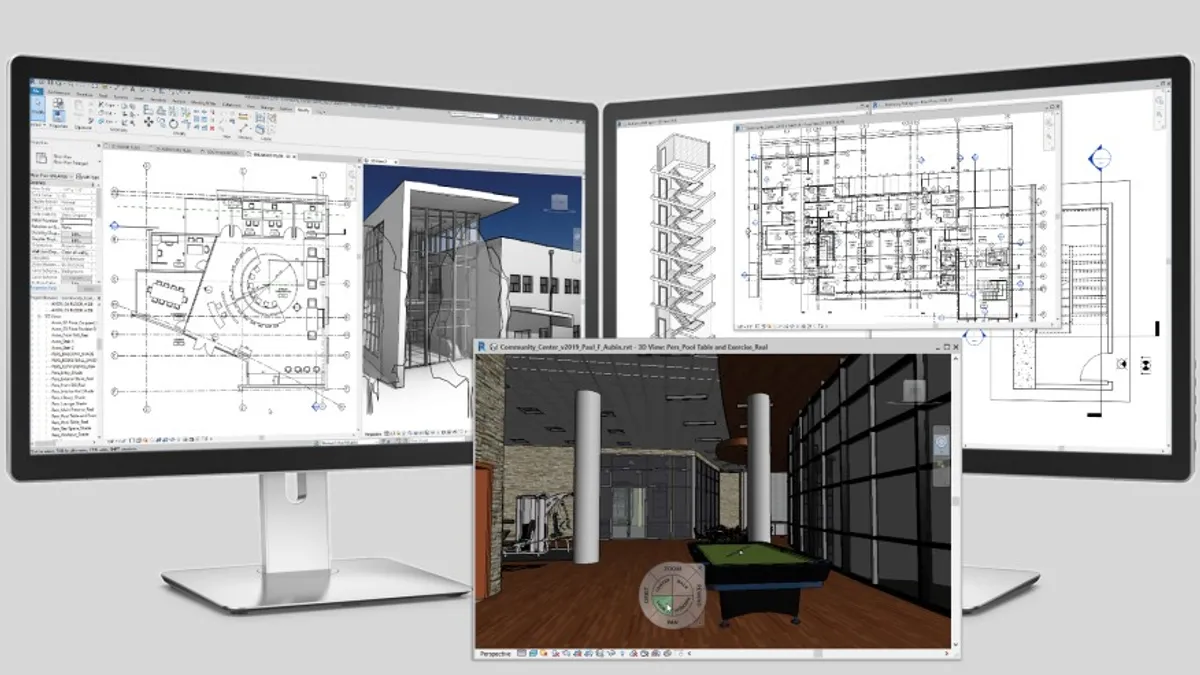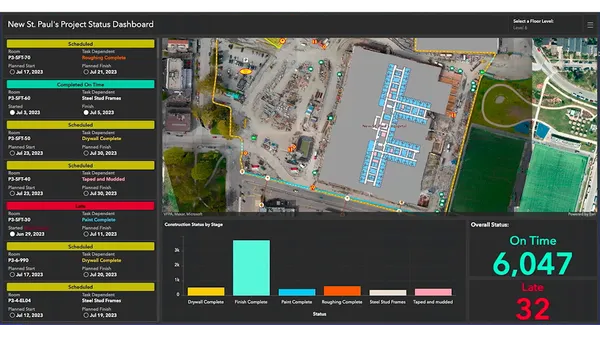Dive Brief:
- Software company Autodesk recently released significant updates to its Revit and Dynamo platforms. Autodesk Revit 2019, which includes Autodesk’s proprietary building information modeling (BIM) program, incorporates changes based on user requests for better viewing controls, according to the Autodesk Revit blog. The open-source Dynamo 2.0 software includes a new file format and simplified scripting language, Architect Magazine reported.
- According to Autodesk, the most common feedback received from Revit users was a request for an “or” Boolean operator to control viewing preferences, in addition to the existing “and” variable. This gives users more combinations of viewing conditions. Other new features include multi-monitor support and double-fill patterns for added visual interest.
- Dynamo 2.0 saves files in JavaScript Object Notation (JSON), rather than the XML file format used in the previous version. The node library can now be resized and collapsed for easier browsing, and the scripting language has been simplified, according to a Dynamo announcement.
Dive Insight:
The Revit and Dynamo upgrades follow the release last fall of Autodesk's BIM 360 platform, a cloud-based service that connects the construction project lifecycle. Late last year the company also launched the Connect and Construct Exchange, a BIM 360 integration partner program that delivers third-party software applications and data to the workflow. The program has more than 50 partners.
BIM 360 connects workflows across preconstruction, execution, fabrication, installation and facility management, and the exchange aims to add value to each of those components, Autodesk officials said.
Nevertheless, while it is widely used in U.S. construction projects and more technology is being developed to enhance BIM, there still is no standard for the process. According to Roger Grant, program director at the National Institute of Building Sciences (NIBS), some federal agencies like the Army Corps of Engineers and the General Services Administration are creating their own BIM policies.
“[Federal] agencies are doing as much as anyone in the U.S. to advance standards and common practices,” he told Construction Dive in December. “That’s not their main objective, but it is an outcome of improving operations." The development of a common BIM standard hinges on government construction funding, he noted, saying that the more building activity increases, the closer we might come toward development of a national standard.














